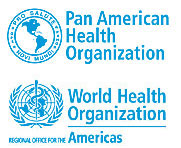|
From:TheBahamasWeekly.com Health  A new report from PAHO also reveals that men live almost 6 years less than women, and proposes nine recommendations to improve their health outcomes A new report from PAHO also reveals that men live almost 6 years less than women, and proposes nine recommendations to improve their health outcomesThe executive summary of the “Masculinities and Health in the Region of the Americas” report highlights that societal expectations of men to be providers, to engage in risk-seeking behaviors, to be sexually dominant, and to avoid discussing their emotions or seeking help – behaviors commonly referred to as “toxic masculinity” - are contributing to higher rates of suicide, homicide, addictions, and road traffic accidents, as well as chronic noncommunicable diseases among men. “We must not lose sight of the fact that women bear differential risks associated with their status as women,” said Anna Coates, Chief of the Equity, Gender and Cultural Diversity office at PAHO. “But the socialization of men also leads to a broad range of health problems that can only be addressed through responsive health policies, programs and services that focus on their particular needs.” The report also highlights that one out of five men die before the age of 50 and many of the leading causes of death in the Americas, including heart disease, interpersonal violence and road accidents are directly related to socially constructed “macho” behaviors. Social constructs around masculinity According to the report, the gender roles, norms and practices socially imposed on men reinforce a lack of self-care and neglect of their own physical and mental health. This concept of masculinity, or “machismo” as it is known in the Americas, leads to three overarching risks; risk to women and children, in the form of violence, sexually transmitted infections, and lack of shared responsibility in the home; risk to other men, such as accidents, homicides and other violence; risk to self, such as suicide, accidents, alcoholism and other addictions. Not only does this affect the health of men themselves, but it also leads to negative outcomes for women and children in terms of interpersonal violence, the transmission of sexually transmitted infections, imposed pregnancy and absent paternity. The report also highlights that discrimination around age, ethnicity, poverty, employment status and sexuality further compound these negative health outcomes for men. Differences in male and female mortality Differences in male and female mortality in the Americas begin to emerge at around the age of 10, and rapidly increase from the age of 15 when violent causes of death, such as homicide, accidents and suicide, predominate. As a result, the mortality rate of young men is around 4-7 times higher than that of young women. While global data for some causes of death, including chronic obstructive pulmonary disease (COPD), lower respiratory infections and diabetes, remain similar between men and women, three of the leading causes of death show significant variations between men and women: Homicides (7: 1 male/female ratio, meaning seven men are killed for each woman killed); road injuries (3:1); and cirrhosis of the liver caused by alcohol, which is twice as high among men than among women. From the age of 50, chronic noncommunicable diseases begin to disproportionately affect men, who are less likely to engage in self-care or seek medical attention early. As a result, while there are more boys than girls born in the world (105 boys for every 100 girls), this number starts to invert between the ages of 30 and 40, and by the age of 80, there are 190 women for every 100 men as men die at younger ages. Moving forward To address issues around male socialization and achieve gender equality in health, women and men need access to health services that take their particular needs into account. The report calls on countries to implement nine recommendations to help improve the health of men: - Improve, systematize and disseminate data on masculinities and health - Develop public policies and programs for health to prevent and address the main problems affecting men through the life course - Eliminate the barriers that prevent boys and men from accessing care - Develop intersectoral initiatives that incorporate health in all policies, particularly in education - Promote existing positive health practices that men already engage in - Ensure the participation of all communities (including men, women and LGBTI communities) - Promote capacity building on gender and masculinities for health sector workers - Strengthen prevention and health promotion programs directed at children and young people - Ensure that institutions, including the health sector, universities and civil society focus on preventing the impact and costs of rigid/toxic masculinities. The findings of the report will be presented on 19 November (09:30 to 11:00 EST) in an online webinar: Masculinities and Health in the Region of the Americas. Links Masculinities and Health in the Region of the Americas – Executive Summary
|